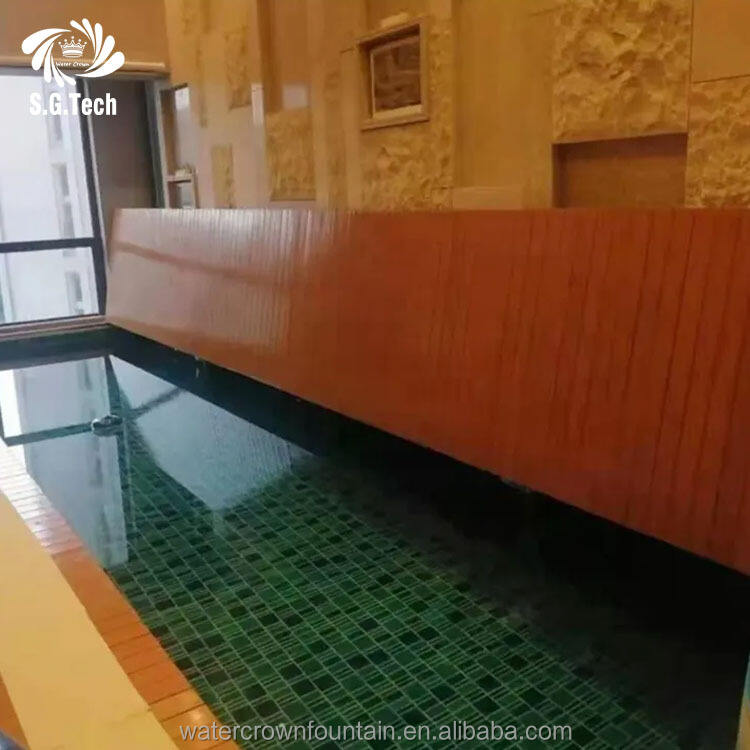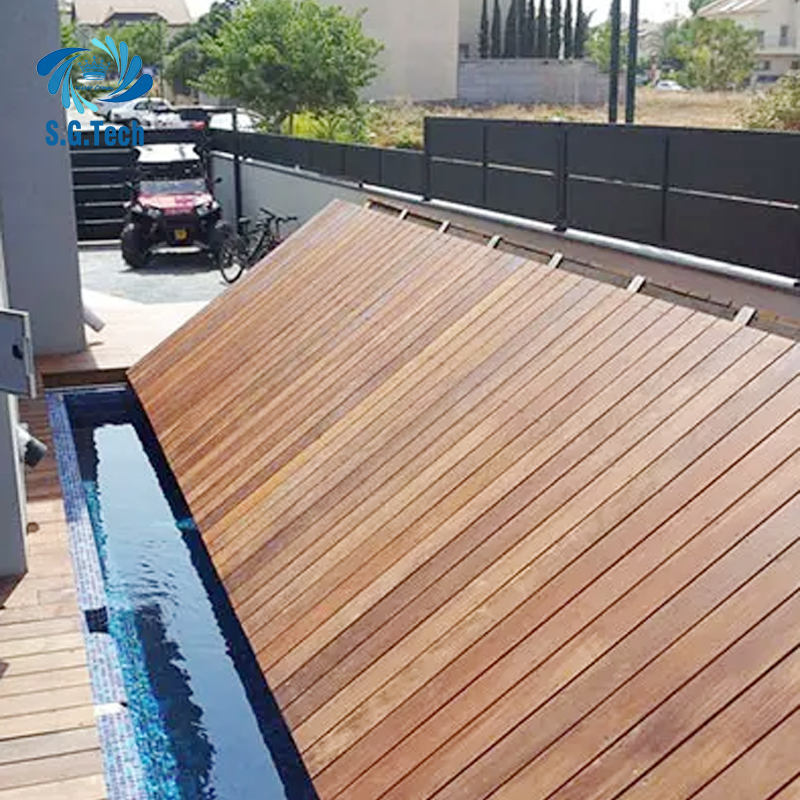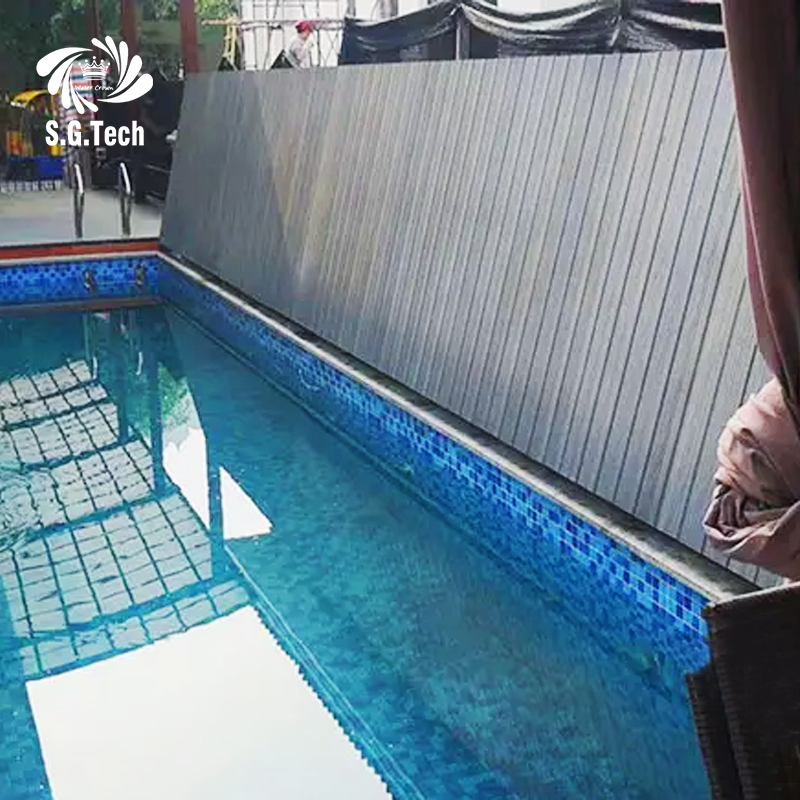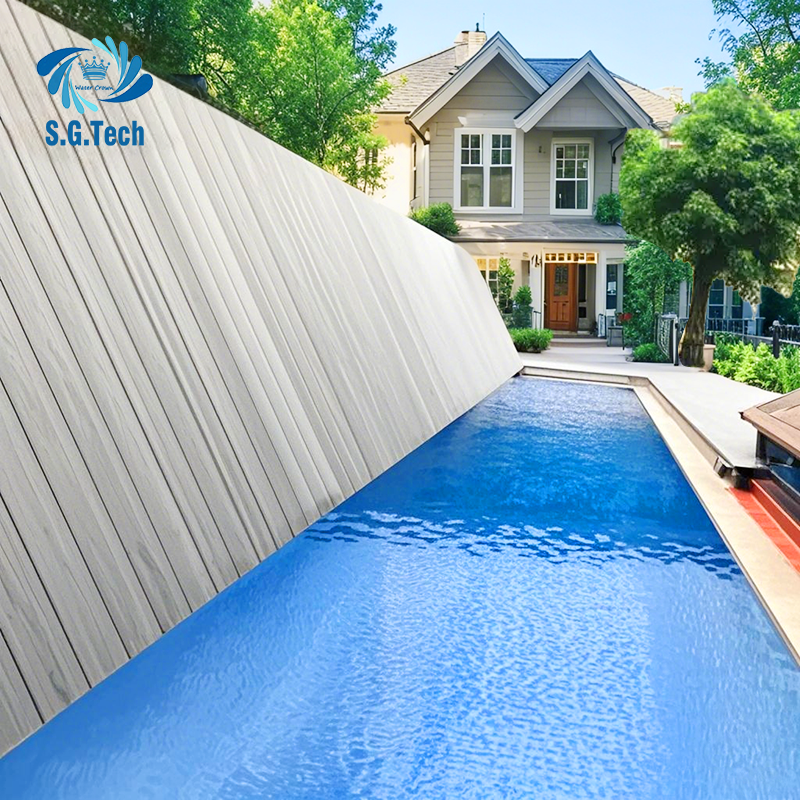
Kattilan kasausjärjestelmän asennus on tarkka prosessi, joka vaatii teknistä tarkkuutta varmistaakseen toiminnallisuuden ja turvallisuuden. Prosessi sisältää yleensä seuraavat vaiheet: 1. Paikan valmistelu: Mittaus uima-altaan mitoista, mukaan lukien pituus, leveys, syvyysmuutokset ja mahdolliset esteet (lakit, raillit). Alueen valmistelu rautatiejärjestelmän asennusta varten: kaivatusten tekeminen, betonipohjien tuotanto tai sulkipidin kiinnitys rakenteellisiin tukijoihin. 2. Jälkijärjestelmän montaus: Alumiinin tai teräsraitojen asentaminen altaan reunalle, varmistetaan vaakataso ja tasaisuus 1/8 tuumaa (3mm) tarkkuudella. Raitojen kiinnitys ankereilla tai pölkkyillä, tarkistetaan kuorman kantokyky kattilan painoa varten. 3. Kattilapaneelien asennus: Kasaavien paneelien kiinnitys raitoihin vedetyillä tai vaipilla, varmistetaan sujuva liike ilman sidottamista. Paneelsegmenttien yhdistäminen (suurempia kattiloja varten) kestoisilla vaipoilla tai lukkoilla, säilytetään rakenteellinen kokonaisuus. 4. Moottorin ja ohjaussysteemin asetus (moottorillisille malleille): Moottorilaitteen kiinnitys, sähköjärjestelmien johtaminen ja operaatioiden ohjelmointi (esim. avaus/sulkus nopeudet, turvatarkastelut). 5. Suomennus ja sääilma-esteiden asetus: Vedepuhaltuvien suomien käyttö raitojen reunilla ja paneelien yhdisteissä estää vesien pääsyn altaaseen. 6. Testaus ja kalibrointi: Kattilan käyttö manuaalisesti tai automaattisesti testataan varmistaakseen sujuvan liikkeen, säätämällä jännitystä tai tasaus tarvittaessa. Kuormatestien toteuttaminen (turvakattiloille) varmistaakseen painon kantokyky. 7. Lopputarkastukset: Varmistetaan noudattaminen paikallisten rakennusalustandardien, sähköstandardien ja turvallisuusasetusten kanssa. Ammattiasentajat tarjoavat usein asiakkaille käyttötiedotuksen, korostavat oikean käytön merkitystä ja säännöllistä huoltoa pidätäkseen kattilan eliniän.


